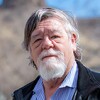Questions
- Have you even talked to a chat bot?
- What is the difference between automated and autonomous? Can these approaches be applied to a drilling rig?
- Do you know the difference between supervised-learning and unsupervised-learning techniques in machine learning?
- What is the Turing test?
- Why does Stuxnet keep your security people up at night?
- Do your digital twin and its physical twin work together?
- How can virtual reality and augmented reality be used in the oil field?
- What is blockchain?
- What are the two ways statistical techniques help solve problems for petroleum engineers?
- What are three ways to build a predictive model for an oil and gas process?
Answers
- Probably yes, but you probably didn’t know it.
- Drilling rigs are commonly equipped with automated devices that are programmed to do a job. In the future, autonomous ones will be able to solve problems independently.
- Supervised learning uses models built with human guidance setting limits on things such as the learning data set and constraints. Unsupervised learning uses a large data set to determine correlations and builds predictive models without human assistance.
- Developed by Alan Turing, a British mathematician, in the 1950s, the Turing test is designed to determine if an interaction is with a machine rather than a human.
- Stuxnet is a malware attack that has seriously damaged industrial control systems.
- No, the digital twin realistically simulates the performance of the physical device. The digital twin is able to test improvements for use on the physical twin’s control system.
- Augmented and virtual reality can be used for training new workers, conducting what-if analysis to optimize new operational approaches, or monitoring maintenance of critical equipment or processes.
- Blockchain is a distributed ledger system that ensures that transactions are immutable.
- The two ways are regression, which finds mathematical expressions that best fit the data, often to predict future performance, and classification, which identifies patterns or groups to characterize potential behavior on the basis of historical performance data.
- The three ways are physics-based, statistically based, or data-driven (artificial intelligence).


